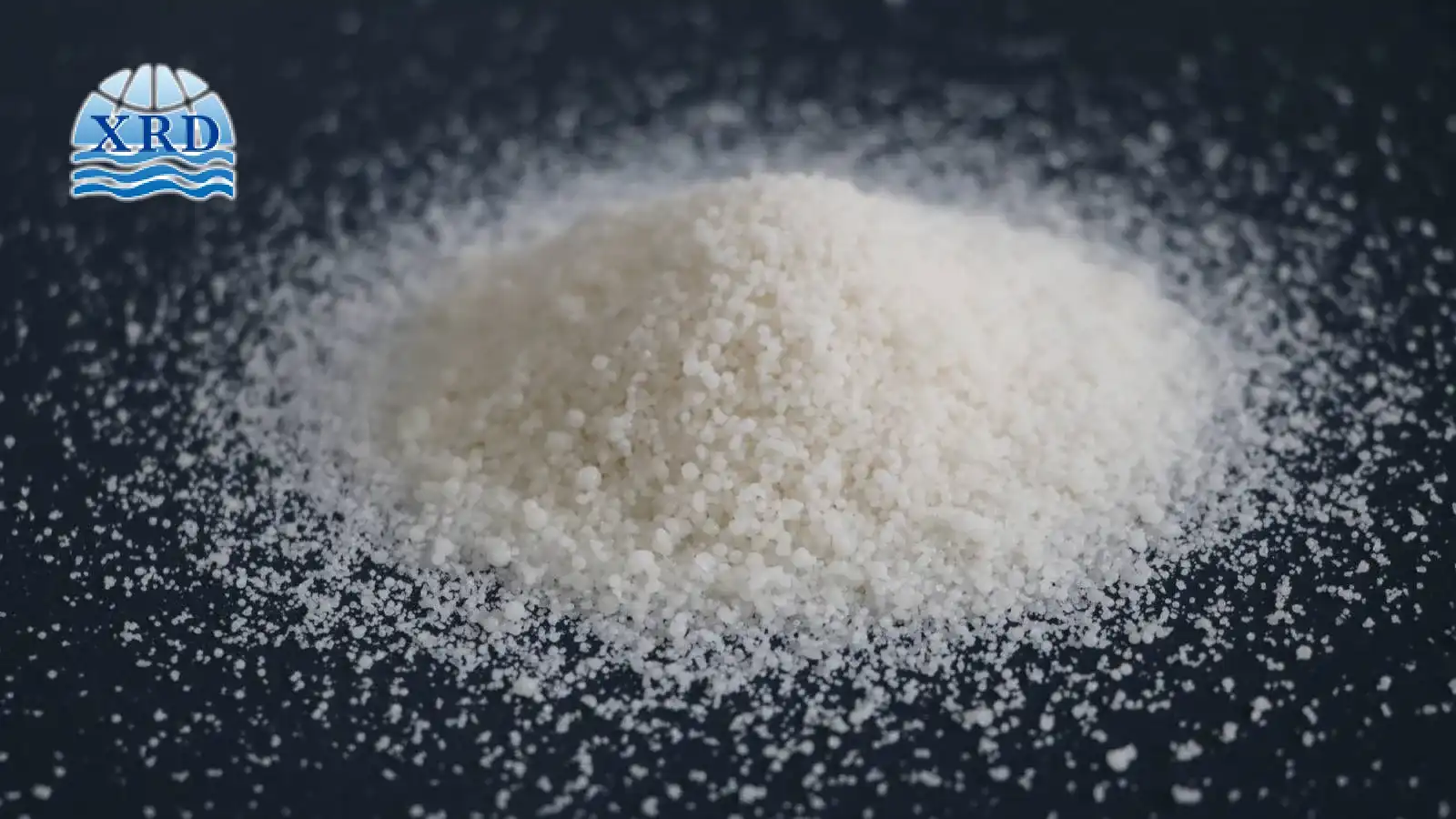Dust control is a major challenge in industries like mining, construction, and agriculture. Unchecked dust causes safety hazards, health risks, equipment damage, and compliance issues. Traditional methods—like water spraying (wasteful) and calcium chloride (environmental concerns)—fall short.
Magnesium chloride (MgCl₂) is the superior, sustainable solution. Its natural hygroscopic properties provide long-lasting dust suppression, outperforming alternatives while meeting strict environmental standards. This article explains why MgCl₂ is the future of dust control, backed by science, data, and real-world success.
The Science Behind Magnesium Chloride's Dust Suppression Mechanism
Magnesium chloride operates through three primary mechanisms that make it exceptionally effective for dust control:
Hygroscopic Action: Magnesium chloride flakes (46%-48% purity) attract and retain moisture better than water. MgCl₂·6H₂O provides superior dust suppression by maintaining moisture in dry environments.
Crust Formation: MgCl₂ creates a durable, flexible crust that suppresses dust and withstands traffic.
Residual Effectiveness: Field tests show MgCl₂ lasts 30-90 days, cutting reapplications and costs while maintaining effectiveness.
Table 1: Key Technical Specifications of Industrial-Grade Magnesium Chloride for Dust Control
| Parameter | Specification | Performance Implication |
|---|---|---|
| CAS Number | 7791-18-6 | Standardized chemical identifier |
| Purity | 46%-48% | Optimal balance of effectiveness and cost |
| Form | Flakes or crystals | Ease of handling and application |
| Molecular Weight | 203.30 | Determines solution mixing ratios |
| Packaging | 25kg/50kg/1000kg bags | Flexible options for different operation scales |
MgCl₂ is eco-friendly, breaking down into natural soil elements without harmful buildup. Studies confirm it safely integrates into ecosystems.
Magnesium Chloride vs. Calcium Chloride: A Performance and Sustainability Comparison
When evaluating dust suppressants, calcium chloride (CaCl₂) frequently enters the discussion as an alternative hygroscopic material. However, direct comparison reveals magnesium chloride's superior performance across several critical parameters:
Humidity Dependence: MgCl₂ works in drier conditions – effective at just 20% humidity vs calcium chloride's 30% minimum. Ideal for arid mines and droughts.
Temperature Performance: MgCl₂ outperforms in cold – stays liquid down to -15℉ (-26℃) vs calcium chloride's -25℉ (-32℃) limit, a crucial difference for winter operations.
Environmental Impact: MgCl₂ is the eco-smarter choice – naturally cycles through the soil without harm, unlike calcium chloride's long-term risks.. Calcium chloride, by contrast, can lead to soil compaction and salinity issues with prolonged use.
Table 2: Performance Comparison Between Magnesium Chloride and Calcium Chloride
| Parameter | Magnesium Chloride | Calcium Chloride | Advantage |
|---|---|---|---|
| Effective Humidity Range | 20%+ | 30%+ | Magnesium works in drier conditions |
| Low-Temperature Performance | -15°F (-26°C) | -25°F (-32°C) | Calcium has slight edge in extreme cold |
| Crust Flexibility | High | Moderate | Magnesium resists cracking better |
| Soil Impact | Minimal salinity increase | Can increase soil salinity | Magnesium more soil-friendly |
| Corrosion Potential | Moderate | Higher | Magnesium less corrosive to equipment |
| Application Frequency | 30-90 days | 20-60 days | Magnesium lasts longer between applications |
MgCl₂ saves money long-term – lower lifetime costs despite the slightly higher upfront price, thanks to:
• Longer effectiveness = fewer reapplications
• Reduced labor and equipment use
Real-World Success: Magnesium Chloride in Mining Operations
MgCl₂ delivers real-world results – proven in mining operations to:
• Improve worker safety
• Meet environmental regulations
• Maintain community relations
At a large open-pit copper mine in the southwestern United States, the implementation of a magnesium chloride dust control program yielded dramatic improvements:
- Air Quality Metrics: PM10 (particulate matter ≤10 micrometers) levels along haul roads decreased by 73% compared to previous water-only suppression methods
- Application Frequency: Reduced from daily water truck runs to biweekly magnesium chloride applications
- Cost Savings: 42% reduction in annual dust control expenditures despite higher per-gallon material costs
- Equipment Longevity: Haul truck filter replacements decreased by 28% due to reduced dust ingestion
Mine operator testimony:
MgCl₂ delivered instant visibility improvements on haul roads – with bonus benefits:
• 30% less equipment wear
• Zero community complaints
• More sustainable operations
Construction sector results:
• Stabilized work surfaces
• 80% dust reduction
• Fewer regulatory issues
Environmental Compliance and Regulatory Approvals
The compliant choice – globally approved by major regulators as an eco-friendly dust solution:
EPA Compliance: MgCl₂ meets EPA standards as a safe, non-chemical dust suppressant under Clean Air Act guidelines.
International Standards: Food-grade purity - MgCl₂ meets ISO 9001 standards with proven safety for multiple applications.
Material Safety: Safer choice – MgCl₂ has lower health/environmental risks than synthetic alternatives (per MSDS data).
Industry best practices for magnesium chloride application further enhance its environmental profile:
- Precision Application: Modern spray systems with GPS guidance ensure optimal coverage without over-application
- Runoff Management: Buffer zones and application rate controls prevent excessive accumulation in sensitive areas
- Seasonal Timing: Aligning treatments with weather patterns maximizes effectiveness while minimizing reapplication needs
Implementing Magnesium Chloride Dust Control: Best Practices
Transitioning to magnesium chloride dust suppression requires attention to several operational factors:
Product Selection: Optimal purity – Industrial MgCl₂ (46-48%) balances cost and performance.
Solution Preparation: Standard mix: 30-35% MgCl₂ solution (adjust for dust levels).
✓ Use clean water
✓ Higher dust = stronger mix
✓ Prevents equipment clogs
Application Rates: Typical application rates fall between 0.5-1.5 gallons per square yard, varying based on:
- Surface material (gravel vs. dirt)
- Traffic volume and speed
- Weather conditions
- Desired duration of effectiveness
Equipment Requirements: Professional application typically uses:
- Tank trucks with precision spray bars
- Computer-controlled flow meters
- Agitation systems to maintain solution consistency
- GPS guidance for even coverage
For smaller operations, backpack sprayers or tow-behind units can provide effective treatment at reduced capital cost.
Monitoring and Maintenance: Effective programs include:
- Regular visual inspections of treated areas
- Dust monitoring with particulate sensors
- Application logs tracking dates, rates, and weather conditions
- Equipment calibration checks
Conclusion
Magnesium chloride is the ideal dust control solution, offering superior performance, environmental safety, and cost-effectiveness while meeting sustainability requirements.
Key advantages include:
- Superior dust suppression through moisture retention and crust formation
- Extended effectiveness reducing application frequency and costs
- Broad environmental compatibility with minimal ecosystem impact
- Regulatory acceptance across jurisdictions and industries
- Operational benefits include improved safety and equipment longevity
Magnesium chloride is a proven, eco-friendly dust control solution for mining, construction, agriculture, and municipalities. Its versatility allows customization while ensuring reliable performance. Choosing magnesium chloride balances operational efficiency with environmental responsibility—meeting both industry needs and sustainability demands.

